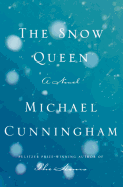
| Publisher: | Farrar, Straus & Giroux | |
| Genre: | Fiction, Family Life, Literary | |
| ISBN: | 9780374266325 | |
| Pub Date: | May 2014 | |
| Price: | $26 |
| Starred | Fiction |
by Michael Cunningham
Michael Cunningham (The Hours) once again elevates the commonplace and makes it important. This quiet, thoughtful novel is a cross section of the lives of two brothers in the early 21st century, both caught between possible miracles and dying dreams.
Before she died when they were young, Tyler and Barrett's mother separately cautioned each of them to watch over the other. Now grown, both brothers struggle with their own demons. Barrett left a promising Ph.D. program to pursue dreams of a less-conventional future that never materialized. Instead, he lives with Tyler, a musician struggling to find inner genius and a fan base, and Beth, Tyler's beloved, terminally ill fiancée. When he spies what he believes to be a sentient green light over the park, Barrett uncharacteristically keeps it secret from Tyler, who in turn has a secret or two of his own.
Cunningham adds the vaguest echoes of the titular frosty fairy tale as grace notes to this story of the mundane and the miraculous. While questions about the existence and impact of miracles occasionally surface, Cunningham's overall theme is love's transience: whether due to death, time or carelessness, love slips away no matter how hard humans try to hold onto it.
Whether taking readers along on an ecstatic drug trip or picking over the fine line between creative genius and maudlin tripe, Cunningham's masterful eye for human observation leads the way. Once again, he shows his talent for picking away the crust of familiarity and revealing the diamond brilliance at the heart of every moment of our lives. --Jaclyn Fulwood, blogger at Infinite Reads
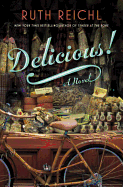
| Publisher: | Random House | |
| Genre: | Fiction, Coming of Age, Contemporary Women | |
| ISBN: | 9781400069620 | |
| Pub Date: | May 2014 | |
| Price: | $27 |
| Fiction |
by Ruth Reichl
Ruth Reichl (Garlic and Sapphires; Tender at the Bone) has been synonymous with "food writing" since 1972; the former New York Times restaurant critic, restaurant co-owner and food-show host has informed the way the U.S. thinks about cooking and dining for decades. In Delicious!, her first novel, a young woman works for an ill-fated food magazine, reminiscent of Reichl's days as editor-in-chief of the now-defunct Gourmet. The story soon goes beyond the autobiographical to become both a richly detailed historic fiction of the U.S. home front during World War II and a poignant exploration of love and loss.
It's unclear why Billie Breslin has fled California for New York, but her immersion in the magazine world includes the fellowship of the quirky staff and an iconic family-operated Italian cheese shop. A self-deprecating loner, Billie is most honest in letters to her beloved sister. Reichl repeats this epistolary theme in the novel's delightful second plot: in a hidden room in the magazine's headquarters, Billie discovers a cache of letters an Ohio girl wrote to her idol, James Beard, in the early '40s.
Billie opens her heart and imagination to the correspondents and is slowly coaxed from her unexplained melancholy by a very present-day admirer. Her devotion to the history she uncovers is rewarded as she follows clues to Cleveland to solve mysteries the letters raised. By the well-plotted end, Billie's curiosity and loving nature lead her to truths about herself as well. Don't expect any of Reichl's enticing recipes, though; most included here feature World War II surplus ingredients, with the exception of a special gingerbread. --Cheryl Krocker McKeon, manager, Book Passage, San Francisco
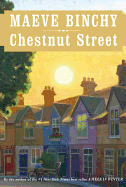
| Publisher: | Knopf | |
| Genre: | Fiction, Contemporary Women, Family Life, Literary | |
| ISBN: | 9780385351850 | |
| Pub Date: | April 2014 | |
| Price: | $26.95 |
| Fiction |
by Maeve Binchy
Readers will smile with somewhat bittersweet satisfaction while they page through the latest (and perhaps the last) work by Irish fiction powerhouse Maeve Binchy (Circle of Friends). Binchy's stories of everyday life are just as outstanding as they've always been. But the great writer passed away in 2012, and this newly released collection of short stories is billed as a series of tales that she had stowed away for a rainy day. This anthology of charming chronicles will make many readers fervently hope that more of Binchy's writing is socked away somewhere to enjoy at a future date. She's that good.
While each of these distinctive stories is set in Ireland, they involve a variety of characters and time periods. What all of the characters have in common, however, is that they call Chestnut Street home. It's an avenue where philandering husbands tango with zealous cab drivers and over-sensitive psychics. It's a place where unusual friendships can spring up to save people from themselves. Chestnut Street is a venue in Binchy's imagination where the rich can learn from the poor and family ties are both tested and twisted, sometimes triumphantly so. The loosely related tales here range from enjoyable and humorous to achingly poignant.
The addition of quaint Irish vernacular helps transport the reader. Take a stroll down this street and you'll see ordinary people facing extraordinary situations that only Binchy could execute so effortlessly. --Natalie Papailiou, author of blog MILF: Mother I'd Like to Friend
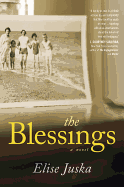
| Publisher: | Grand Central | |
| Genre: | Fiction, Contemporary Women, Family Life | |
| ISBN: | 9781455574032 | |
| Pub Date: | May 2014 | |
| Price: | $24 |
| Fiction |
by Elise Juska
If Tolstoy is right that "Happy families are all alike," the Irish-Catholic Blessing family might stand in for a universe of families. In a rich novel of family stories, Elise Juska (One for Sorrow, One for Joy) chronicles the goings and comings of this large close-knit Philadelphia family--dinner by dinner, marriage by marriage, generation by generation. Only when third-generation Abby goes off to college does she discover that not everyone grows up in family like hers: a family that annually vacations together on the Jersey Shore, a family that gathers for holiday dinners to exchange "mild conversations about ordinary things" and share "predictable, unpretentious ham salads and roast beef, potatoes in hollowed-out brown skins, cobbled chunks of pickle wrapped in ham, speared with toothpicks," a family that takes its measure in its "response to sad things."
If the Blessings are not a blissfully "happy family," they are also decidedly not the dysfunctional family of Franzen's The Corrections or that of St. Aubyn's Patrick Melrose novels. The Blessings have their struggles with disease, dementia, divorce and death, but always they close ranks in mutual support. They are at their best when difficult circumstances create "a determined stirring: to be on the cusp of a crisis, to rise to it, as a family." In time, an older Abby comes to discover the value of family just being there, that "if everybody is ok, it is enough." With a keen eye for detail and character, Juska shows us that, Tolstoy notwithstanding, a happy family can be happy in its own way and make for great storytelling. --Bruce Jacobs, founding partner, Watermark Books & Cafe, Wichita, Kan.
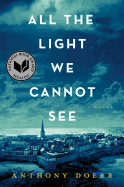
| Publisher: | Scribner | |
| Genre: | General, Fiction, Historical | |
| ISBN: | 9781476746586 | |
| Pub Date: | May 2014 | |
| Price: | $27 |
| Fiction |
by Anthony Doerr
This second novel from Anthony Doerr (About Grace) will likely draw comparisons with Markus Zusak's The Book Thief. It's set during World War II and features a girl who stands firm in the face of evil, thanks to the power of literature and learning. All the Light We Cannot See, though, is its own creature: an intricate miracle of invention, narrative verve and deep research--but above all a miracle of humanity.
It's August 1944 in the last Nazi stronghold in Brittany. Marie-Laure LeBlanc and Private Werner Pfennig are both trapped within Saint-Malo as the Allies prepare to destroy it. Marie-Laure--a blind 16-year-old, unable to read the leaflet urging residents to depart--is preoccupied with keeping her great-uncle's house safe from intruders. Werner, an 18-year-old German soldier, is holed up only five streets away, desperate to find the source of one particular radio transmission. This desire, we learn, has nothing to do with national allegiance and perhaps everything to do with Marie-Laure. These two exceptional innocents share a strange, star-crossed history.
Flicking back and forth between 1944 and the protagonists' very different 1930s childhoods, Doerr writes in the historic present throughout. The novel has several monsters, not least the driven Sgt. Major Reinhold von Rumpel, who is among those charged with relieving France of its heritage. Yet this man is allowed his moments of fear and humanity, as is most everyone in this abundantly peopled novel.
Doerr harnesses what only the finest artists can: the power to create, reveal and augment experience in all its horror and wonder, heartbreak and rapture. --Kerry Fried
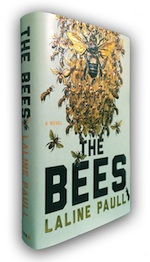
| Publisher: | Ecco | |
| Genre: | Fiction, Dystopian | |
| ISBN: | 9780062331151 | |
| Pub Date: | May 2014 | |
| Price: | $25.99 |
| Fiction |
by Laline Paull
In the tradition of Watership Down and Redwall, Laline Paull's debut novel, The Bees, is an enthralling story that explores the intricate and brutal social order of the beehive. Paull's hive is a place of mystery and complexities, where religion holds sway with an array of strictly codified laws that coalesce around worship of the Queen, who sustains the hive with her Love. Of the many laws dictating the lives of the bees, paramount is Only the Queen may breed--a law enforced with horrendous efficiency by the fertility police. Individuality is also forbidden, a principle encapsulated in the oft-repeated mantra Accept, Obey, and Serve. So when Flora, a despised sanitation worker bee, discovers her ability to lay eggs, her life is immediately placed in jeopardy. Even more dangerous is Flora's determination to protect her offspring--at any cost.
Flora is different from the other sanitation workers--she was born with abilities that set her apart and almost lead to her execution at her hatching, but ultimately she is saved by the precept that "Variation is not the same as Deformity." The priestesses who hold the power of life and death in the hive see a use for Flora's unusual talents. The population of the hive is much reduced and food is becoming scarce, so Flora is put to work filling roles that would have otherwise been assigned other types of bees, including the risky task of foraging for nectar, which involves dodging wasps, spiders, and--perhaps most deadly of all--poison set by human hands.
Interweaving science with myth, The Bees immerses readers in a world that is intensely foreign and fraught with intrigue--in fact, the novel resembles Game of Thrones as much as Watership Down, with scenes of shocking violence and death. When the drones' mating season has passed, the worship they enjoyed from the female bees turns to nightmare, in a moment that seems inspired by the Maenads of Greek mythology who tore Orpheus to death. The religious elements are continued here, as the Queen illustrates: "And as you slew my sons your brothers, in sacrifice to Winter, so did I slay your several fathers, in sacrifice to Spring. Each one's life I took for love, and each year I tell this tale."
The bees will proceed to forget the horrors they have wrought against the drones, renewing their innocence for the next cycle of the seasons, in what is clearly an ancient rite. When the next generation of drones is born, the female bees will worship the males with the same enthusiasm as before, without a hint of what is to come. A single drone will emerge as a character who begins as Flora's enemy, but who will over the course of time become her only ally in her deadly game of hiding her eggs from the priestesses.
In addition to myth, the dialogue between Flora and other creatures is reminiscent of Aesop's fables; similarly, she must be clever to thwart their hostilities or occasionally benefit from their generosity. There is a lofty tone to these exchanges, perhaps because each creature is not an individual character so much as a symbol of that creature's characteristics. The wasp tends to be the boastful enemy who might be won over with appeals to its ego. The spider, which is much more dangerous, can see the future and delights in the prospect of the hive's destruction, bringing to mind the archetypal wicked witch. And like a witch, it trades constantly in hard bargains.
While hive life is filled with mortal dangers, Paull never loses focus about the most omnipresent danger: the outside world and the threat it poses not just to this hive, but to all bees worldwide. The spectre of global warming looms over the proceedings, making itself felt in numerous ways, from the diminishing number of bees to the harsh conditions of winter. Nature is cruel, The Bees reminds us, but that is because it must fight uncompromisingly for survival. This is especially true of the hive, a system so complex and delicate. Its rule of law must be brutal for its own protection in an increasingly hostile world. After all, even the human beekeepers who occasionally make an appearance are hardly equal to the task.
Yet despite the emphasis on violence and survival, the most vital thread of all does not turn out to be either one. Flora is willing to risk her own survival for the good of her eggs, of her companions, and of the hive as a whole. All the bees are willing to die for their Queen, whose devotion nurtures them. Even in the ruthless teeming of the hive, where execution is labeled a Kindness, the value that surfaces most powerfully in the end is love. --Ilana Teitelbaum
Watch The Bees trailer here.
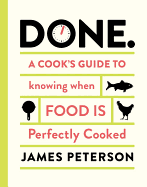
| Publisher: | Chronicle | |
| Genre: | Cooking, Reference | |
| ISBN: | 9781452119632 | |
| Pub Date: | April 2014 | |
| Price: | $27.50 |
| Starred | Food & Wine |
by James Peterson
James Beard Award-winning cookbook author James Peterson (What's a Cook to Do?) aims to expand the new or intermediate cook's ability to assess the doneness of food beyond toothpicks stuck into cakes and spaghetti thrown against the fridge with Done, a hybrid reference-recipe book. First, one must grapple with Peterson's occasionally contrary opinions. For instance, while the U.S. Department of Health and Human Services and most cooking guides advise that poultry is safe to eat once it has reached 160º F, Peterson prefers 140º F. A two-pound lobster, he says, will be cooked to perfection after only four minutes (compared to the standard 20 minutes, and after a knife-delivered coup de grâce). But Done surveys far more than birds and crustaceans. After an introductory section that explains various cooking methods, the book marches pithily through sauces, eggs, side dishes, entrées (organized by protein type) and desserts.
Peterson explains how precise cooking times and the cook's eyes, ears, nose and fingertips--or a humble dipping spoon or wooden skewer--can be deployed as effectively as a standby thermometer. The attractive color photographs illustrate preparation steps and exactly where to place a probe when necessary. While Done would make an excellent primer for an omnivorous beginner who wants to prepare sophisticated yet streamlined Eurocentric cuisine, almost every entry contains a tip, technique or insight that would edify cooks who already know their roux from their choux. --Holloway McCandless, blogger at Litagogo: A Guide to Free Literary Podcasts
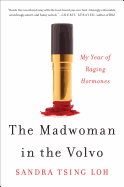
| Publisher: | W.W. Norton | |
| Genre: | Biography & Autobiography, Personal Memoirs | |
| ISBN: | 9780393088687 | |
| Pub Date: | May 2014 | |
| Price: | $25.95 |
| Biography & Memoir |
by Sandra Tsing Loh
There's a moment in Sandra Tsing Loh's autobiographical narrative on "the change" when, in an attempt to stave off the middle-age belly fat that's a byproduct of her slowing metabolism, she takes every class her gym offers. Loh (Mother on Fire) winds up maniacally screeching "No More!," but her hilarious, absurd memoir will leave readers demanding the opposite, and laughing until they weep (even if their hormones are perfectly balanced).
This brutally candid account of the transition from fertile young'un to seasoned lady may give readers hope that there's a hidden benefit to menopause: becoming courageously outspoken. Loh, a radio host and humorist, writes frankly of the fallout from her extramarital affair, her efforts to support her angry father and the precise timbre of her preteen daughters' voices (which make her completely nuts). She tries everything from yoga to a Greek yogurt diet to calm her careering hormones, but ultimately realizes that acceptance is the true path to enlightenment.
Beyond the bold humor in Loh's everyday life as she tries (sometimes in vain) to steer the roller-coaster of her perimenopausal emotions, the real impact here comes from her moments of personal revelation: Prince Charming sometimes goes back to his wife, parents still have the power to break our adult hearts, and there is no shame in taking a little estrogen to cope. Uproarious but with real notes of human failing and self-examination, The Madwoman in the Volvo offers a raw assessment of an unavoidable change. --Natalie Papailiou

| Publisher: | Haymarket Books | |
| Genre: | Political Science, General, Imperialism, Women's Studies, Social Science, Human Rights, Feminism & Feminist Theory | |
| ISBN: | 9781608463862 | |
| Pub Date: | May 2014 | |
| Price: | $11.95 |
| Social Science |
by Rebecca Solnit
In this collection of essays, activist and Lannan Literary Award winner Rebecca Solnit says of feminism, "some battles are won, some are engaged, and some women are doing really well while others suffer. And things continue to change in interesting and even auspicious ways." Tonally, that sentiment reflects the collection as a whole in all its multifaceted glory. Depending on the piece (and the subject) at hand, Solnit is alternately grim, hopeful, humorous, scientific or personal, discussing everything from commonplace cultural phenomena to specific passages of Virginia Woolf with the dexterity of a writer at the peak of her abilities.
Though these pieces dance between the personal and the global, their common thread is Solnit's thorough and thoughtful analysis of modern culture. In "Pandora's Box and the Volunteer Police Force," which deals with feminism's historical progress, she considers the intersection of the civil and gay rights movements alongside the fight for women's rights, noting that the Supreme Court justices cited the anti-slavery 14th Amendment as part of their decision to allow a woman control over her body. In "Worlds Collide in a Luxury Suite," she considers the larger global symbolism of French politician Dominique Strauss-Kahn's sexual assault of an African maid at a New York hotel.
Where opponents would argue that feminism is humorless and superfluous, Men Explain Things to Me is a compelling argument for the movement's necessary presence in contemporary society. It approaches the subject with candor and openness, furthering the conversation and opening a new Pandora's box that's apt to change the way we talk about women's rights. --Linnie Greene, freelance writer and bookseller at Flyleaf Books
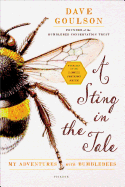
| Publisher: | Picador | |
| Genre: | Animals, Insects & Spiders, Wildlife, Life Sciences, Science, Zoology - Entomology, Nature | |
| ISBN: | 9781250048370 | |
| Pub Date: | April 2014 | |
| Price: | $25 |
| Nature & Environment |
by Dave Goulson
As it skips from the small town of Shropshire, England, to Tasmania and its wildflowers, Dave Goulson's debut treatise delights and informs readers on the varied lives and intricate behaviors of bumblebees. Although "it is a common misapprehension that there is just one species of bee: they have yellow and black stripes and they sting," Goulson tells us that there are 27 distinct bumblebees living in England alone and "perhaps 25,000 species of bee in the world."
Goulson--founder of the Bumblebee Conservation Trust in the U.K.--serves up a lifetime of observations and analysis in an accessible and often humorous format. We learn many quirky details: bees have smelly, oily feet that leave scent patches on flower petals; bumblebees and honeybees have distinctly different mating habits; it is possible to measure the length of a bumblebee's tongue to determine which flower species it might visit. But Goulson also examines the impact bumblebees have on the world. They are effective pollinators of such cash crops as tomatoes--plants pollinated by bumblebees yield bigger and better tomatoes than those pollinated by humans. More than 30 factories worldwide breed bumblebees for crop pollination, though the environmental effect of such insect production has yet to be fully determined, especially when these bees escape a greenhouse and compete against native species for plant nectar.
Fascinating and in-depth, Goulson's story of bumblebees will inspire readers to plant cottage gardens full of non-hybrid flowers to attract these complex creatures so they, too, can have a closer look. --Lee E. Cart, freelance writer and book reviewer
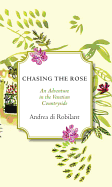
| Publisher: | Knopf | |
| Genre: | Gardening, Flowers, History, Biography & Autobiography, Europe, Italy, Personal Memoirs, Roses | |
| ISBN: | 9780307962928 | |
| Pub Date: | May 2014 | |
| Price: | $26.95 |
| Gardening |
by Andrea Di Robilant
As a title, Chasing the Rose packs a double punch. At one level it refers to Andrea di Robilant's search for the identity of a rose that grows wild on his family's former country estate near Venice. It also describes the mindset of rose-fanciers, embodied here by old-rose collector Eleonora Garlant.
The search began when Di Robilant described a pink rose with a distinctive peach-raspberry scent in A Venetian Affair, his biography of an 18th-century ancestor. That casual aside caught the interest of Garlant, who thought the rose might be one of the long-lost China roses that fueled a rose-breeding frenzy in late 18th-century Europe. Spurred on by Garlant's enthusiasm, Di Robilant soon found himself on the hunt for the name and history of his rose.
Di Robilant's quest leads him to Josephine Bonaparte's rose gardens, the China trade, rose smuggling during the Napoleonic wars, the disappearance of "old roses" in the 19th century and their rediscovery in the 20th. He considers orphan roses, natural hybrids and the politics of registering and naming roses today. At each step of his quest he returns to the gardens of Eleonora Garlant, whose own chase of the rose led her to acquire more than 1,000 varieties of old roses--with names and without.
Written and illustrated in a style reminiscent of Peter Mayle's A Year in Provence, Chasing the Rose is a charming account of a modern obsession and its historical roots. --Pamela Toler, blogging at History in the Margins
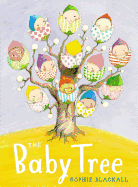
| Publisher: | Nancy Paulsen/Penguin | |
| Genre: | General, New Baby, Health & Daily Living, Family, Juvenile Fiction, Humorous Stories | |
| ISBN: | 9780399257186 | |
| Pub Date: | May 2014 | |
| Price: | $17.99 |
| Starred | Children's & Young Adult |
by Sophie Blackall
In Sophie Blackall's The Baby Tree, words and pictures remain firmly planted in the boy narrator's consciousness as he attempts to understand the impending arrival of a new sibling.
A series of images chronicles his routine. A black cat sleeps on the end of his bed and follows the boy on his rounds to wake up Dad, wake up Mom "and wake up Dad again." The child gets dressed, feeds the cat and, at breakfast, Mom and Dad "tell me they're going to tell me some news. And then they tell me the news. A new baby is coming." The boy asks various trusted sources about where babies come from. Olive, the teenager who walks the boy to school, says, "You plant a seed and it grows into a Baby Tree." The child imagines babies hatching from bulb-like blossoms. His teacher says babies come from the hospital. Grandpa says the stork brings the baby and "leaves it in a bundle on your doorstep." Yet every morning, when the child opens the door, "there are no babies, only the mail." Finally, he simply asks his mom and dad, "Where do babies come from?" Their explanation is well-suited to preschoolers and kindergartners. In a humorous twist, the boy finds the kernel of truth in everyone's explanations, except for one: "I'm going to have to tell Grandpa where babies come from." Blackall's (Big Red Lollipop) endnotes suggest additional age-appropriate responses.
With just enough concrete information and whimsy, this will be the go-to book for families who are expecting a second child. --Jennifer M. Brown, children's editor, Shelf Awareness
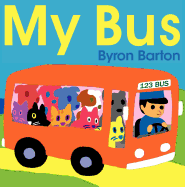
| Publisher: | Greenwillow/HarperCollins | |
| Genre: | General, Juvenile Fiction | |
| ISBN: | 9780062287366 | |
| Pub Date: | April 2014 | |
| Price: | $16.99 |
| Children's & Young Adult |
by Byron Barton
One of the great masters of words and pictures for youngest book lovers takes a favorite topic--vehicles--and adds a simple math lesson.
A bus driver named Joe sports a navy-blue uniform and cap, and drives his red bus on a yellow road. "At my first top, one dog gets on my bus," he says, as a spotted, wagging pup climbs aboard. At his second stop, a black cat and purple cat enter the bus. Three more felines get on at the third stop. Youngsters can clearly see the spotted dog at the back of the bus, and the five cats lined up along the right-hand side. Four dogs wait at the last stop, and sit on the left side of the bus, in front of the first dog. Author-artist Byron Barton (My Car) knows children will count the passengers and pulls no punches: "Five dogs and five cats are on my bus." He makes it easy for children to keep tabs on the animals. A magenta boat waits while the bus drops "one dog and two cats" at the dock: "They sail away." Youngsters can see the trio through the boat's windows, and also the seven animals still on the bus.
Children will grow in confidence as they keep tabs on the whereabouts of cats and dogs and a running tally as they board the train and plane--until one sole pup remains on the bus. Not to worry! We soon discover where that last pooch belongs. --Jennifer M. Brown, children's editor, Shelf Awareness